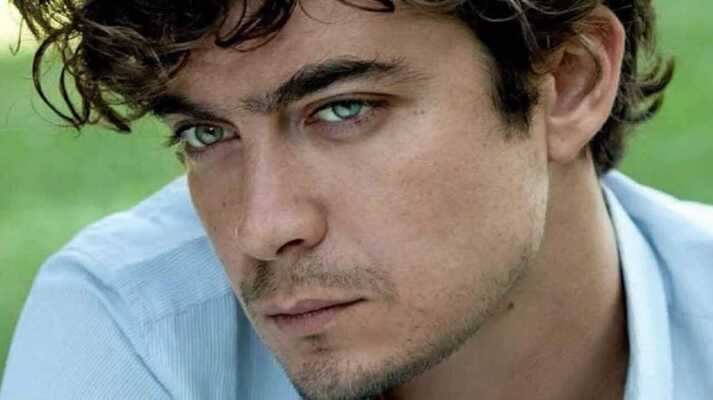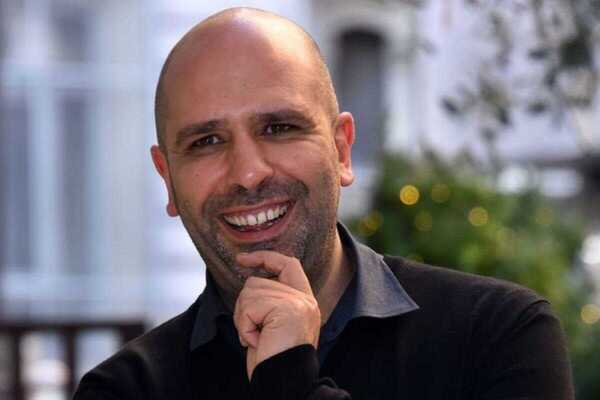Films shot in Puglia
The beauties of Puglia attract thousands of tourists every year who appreciate the beaches, art, history, cuisine and much more of this land. Many directors (often internationally renowned) who decide to set their films in this splendid setting are also captivated by the breathtaking scenery that this region has to offer. In fact, over the years there have been many film sets set up in the region, also thanks to the activity carried out by the Apulia Film Commission Foundation. If you are passionate about film tourism and have been fascinated by Puglia thanks to some films shot here, this article is for you.
List of the most famous films shot in Puglia
MANUALE D’AMORE

“Manuale d’amore 2 – Capitoli successivi” is the sequel to “Manuale d’amore”, directed by Giovanni Veronesi. Like the first film, the plot is divided into four episodes (Eros, La maternità, Il matrimonio e Amore estremo) which deal with themes ranging from the difficulty of having a child and the use of assisted fertilization, a gay marriage, the betrayal of a husband with a younger woman after losing passion with his wife and a young man’s obsessive relationship with his physiotherapist after becoming the victim of a car accident.
Among the protagonists are the Apulian Riccardo Scamarcio and Sergio Rubini but also Fabio Volo, Carlo Verdone, Monica Bellucci, Barbora Bobul’ova’ and Claudio Bisio. Filming took place between Italy (Rome, Cagli and Lecce) and Spain (Barcelona). There are many scenes filmed in the Salento city and province such as the wedding scene of Fosco’s sister (Sergio Rubini) set in the Church of San Lorenzo in Lizzanello. In Lecce appear Piazza del Duomo, Piazza Sant’Oronzo, the Fountain of Harmony, Piazzetta Arco di Prato and Palazzo Rollo.
AMICI COME NOI
“Amici come noi“ is a film starring the Apulian comedy duo Pio and Amedeo, directed by director Enrico Lando. The town of the film is Monte Sant’Angelo, a town in the Gargano, a UNESCO heritage site for the Sanctuary of San Michele Arcangelo, a suggestive cave in which the Archangel appeared. The events are also set in Foggia (birthplace of the two actors). It is the story of two thirty-year-old friends, partners in a funeral home, and their adventures: Pio is betrothed to Rosa, a young primary school teacher and plans to move to Belluno with her; Amedeo, on the other hand, is single but has fun with several girls.
Shortly before Pio’s wedding to Rosa, the man becomes aware of a hardcore video regarding his future wife and that becomes the pretext for the young man to escape with his friend Amedeo towards Rome, leaving their town. A series of amusing misadventures bring the two protagonists to Milan where Pio discovers that the video was just a stunt by Amedeo to prevent him from moving to Belluno.
MINE VAGANTI

“Mine vaganti” by Ferzan Ozpetek features, among other performers, the Apulian artists Riccardo Scamarcio and Lunetta Savino, with Elena Sofia Ricci, Nicole Grimaudo and Ennio Fantastichini. The film is staged in Salento and in particular in Lecce where it is possible to recognize Piazza Sant’Oronzo and Via Paladini, the beaches of Gallipoli and a real pasta factory in Corigliano d’Otranto. The film tells the story of the young Tommaso Cantone, originally from Salento, who leaves his homeland, which is too traditionalist and bigoted, to move to Rome and be able to live his homosexual relationship with Marco in peace. He makes the decision to come out to his family and for this reason he moves back to Lecce where, among a series of events, he must gather the courage to reveal his sexual orientation.
IO CHE AMO SOLO TE

“Io che amo solo te” is a comedy directed by Marco Ponti starring Riccardo Scamarcio and Laura Chiatti, who play Chiara and Damiano, two young engaged couples from Polignano a Mare. The two lovers learn that many years earlier their parents, Ninella (Chiara’s mother) and Don Mimì (Damiano’s father), were also about to get married but due to a series of misadventures they did not have their happy ending. The shooting of the film took place in Polignano a Mare, a beautiful city in the province of Bari, also famous for being the birthplace of Domenico Modugno and for its crystal clear waters which attract thousands of tourists every year. Protagonists of other scenes are also the nearby cities such as Monopoli, Turi, Fasano and Martina Franca.
L’UOMO NERO

“L’uomo nero” is a film directed and starring Sergio Rubini who chose to stage the events discussed in his region. Among other things, another protagonist of the film is also from Puglia, Riccardo Scamarcio; the cast is completed by, among others, Valeria Golino and Anna Falchi. “L’uomo nero” talks about the return of Gabriele Rossetti to his town of origin (San Vito, perhaps referring to San Vito dei Normanni where many filmings took place) to watch over his seriously ill father Ernesto. It is precisely during this occasion that Gabriele relives flashbacks of his childhood and of his relationship, sometimes tormented, with his father, a former station master of the town and lover of art and painting.
In addition to San Vito dei Normanni, the other takes took place in Brindisi and its province (Mesagne, Oria, Torre Santa Susanna); in Manduria, in the province of Taranto and in Bari and its province (Altamura, Modugno, Giovinazzo and Acquaviva delle Fonti). A curiosity is that Sergio Rubini’s hometown, Grumo Appula, also appears in the film in scenes depicting an old train belonging to the Appulo Lucane Railways.
TOLO TOLO

Among the most famous films shot in Puglia we cannot fail to mention the blockbuster film: “Tolo Tolo”. This is the latest of the cinematographic successes of Luca Medici, aka Checco Zalone, director, actor and comedian from Bari. After the failure to open a Japanese restaurant in his town Spinazzola, Checco, overwhelmed by debt, decides to flee from the tax authorities to Africa, where he finds work as a waiter in a resort in Kenya. In addition to Morocco, Kenya and Malta, many shootings took place in Bari, Acquaviva delle Fonti, Gravina in Puglia, Minervino Murge, Monopoli, Poggiorsini, Spinazzola and Torre Guaceto. The film was so successful at the box office that it became the fifth highest grossing in Italy and the third Italian film (after “Quo vago?” and “Sole a Catinelle“, also by Checco Zalone).
SEI MAI STATA SULLA LUNA?
“Sei mai stata sulla Luna?” is a film by Paolo Genovese starring Raoul Bova (Renzo), Neri Marcorè (Pino), Giulia Michelini (Carola), Pietro Sermonti (Marco) and Liz Solari (Guia). The story tells of Guia, an Italian-Spanish girl, director of a famous fashion magazine, overworked and traveling between Milan and Paris, always accompanied by her boyfriend Marco and her assistant Carola.
After years of work, Guia, upon the death of her father, inherits a forgotten farm in Puglia where she spent the summer as a child and it is precisely here that she meets the farmer Renzo, with whom she lives a relationship of love and hate. The film is framed by several Salento villages, Nardò, Galatina, Crispiano, Martina Franca and Brindisi. A curiosity is that after filming the film, Raoul Bova, captured by the beauty of the places in Puglia, bought a farm in Ostuni.
ODIO L’ESTATE

“Odio l’estate” is one of the 2020 films shot in Puglia, directed by Massimo Venier and starring the comic trio Aldo, Giovanni and Giacomo. Three men with apparently normal lives and the usual family problems. They meet during a beach holiday on a southern island where, due to an error by the travel agency, they discover that they have rented the same house . The solution for the three families is to share the apartment: this becomes the pretext for the three men to get to know each other and discuss their lives.
The scenes shot in Puglia actually refer to different cities: Bari and the historic center and Mola di Bari appear several times but there is no shortage of spectacular locations in Salento (Otranto with the Lungomare degli Eroi, Ugento, Santa Cesarea Terme, the Alimini Lakes and Lecce). Again, San Pancrazio Salentino, in the province of Brindisi and Ginosa and Castellaneta Marina, in the province of Taranto.
SI VIVE UNA VOLTA SOLA
“Si vive una volta sola“, is a comedy directed and starring Carlo Verdone. The cinema release was scheduled for February 26, 2020 but was postponed due to the Coronavirus. The plot revolves around the medical crew led by Professor Umberto Gastaldi. These are as expert in their profession as they are unreliable and clumsy in their private lives.
When Umberto, Lucia and Corrado discover that Amedeo is very ill, instead of telling him, they decide to organize a road trip to the beaches of Puglia with the aim of being able to reveal the dramatic truth to their colleague and friend. Carlo Verdone was enthusiastic about having set the film in many Apulian cities, declaring that he received a lot of energy from them and that he discovered a great sense of solidarity on the part of the local people. In particular, the cities featured in the film are Bari, Monopoli, Polignano a Mare, Castro and Otranto.
These are just some of the films shot in Puglia (because the list of titles would still be very long, considering that the region has hosted

Apulian actors who made the history of Italian cinema
Rodolfo Valentino, Lino Banfi, Checco Zalone, Riccardo Scamarcio: these are just some of the artists who, starting from small towns or cities in Puglia, have achieved national (and international) fame as actors, becoming an example of Apulian excellence throughout the world.

Apulian singers
Puglia is a region that boasts many scenic, natural, artistic, historical, cultural and gastronomic beauties but not only that... it is also the land where many artists of the Italian musical scene were born who have also become famous worldwide.

Most famous Apulian comedians
Puglia, in addition to being a wonderful region, visited every year by thousands of tourists, is also the land that gave birth to many artists, including comedians who have become famous throughout Italy
